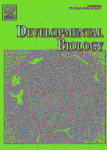Myocardial-specific R-spondin3 drives proliferation of the coronary stems primarily through the Leucine Rich Repeat G Protein coupled receptor LGR4.
Dev Biol. 2018 Sep 1;441(1):42-51. doi: 10.1016/j.ydbio.2018.05.024. Epub 2018 May 31.
Da Silva F1, Massa F1, Motamedi FJ1, Vidal V1, Rocha AS1, Gregoire EP1, Cai CL2, Wagner KD1, Schedl A3.
Author information
1. Université Côte d’Azur, Inserm, CNRS, iBV, Nice 06108, France.
2. Department of Developmental and Regenerative Biology, The Black Family Stem Cell Institute, Icahn School of Medicine at Mount Sinai, One Gustave L. Levy Place, New York, NY 10029, USA.
3. Université Côte d’Azur, Inserm, CNRS, iBV, Nice 06108, France. Electronic address: Schedl@unice.fr.
Abstract
Coronary artery anomalies are common congenital disorders with serious consequences in adult life. Coronary circulation begins when the coronary stems form connections between the aorta and the developing vascular plexus. We recently identified the WNT signaling modulator R-spondin 3 (Rspo3), as a crucial regulator of coronary stem proliferation. Using expression analysis and tissue-specific deletion we now demonstrate that Rspo3 is primarily produced by cardiomyocytes. Moreover, we have employed CRISPR/Cas9 technology to generate novel Lgr4-null alleles that showed a significant decrease in coronary stem proliferation and thus phenocopied the coronary artery defects seen in Rspo3 mutants. Interestingly, Lgr4 mutants displayed slightly hypomorphic right ventricles, an observation also made after myocardial specific deletion of Rspo3. These results shed new light on the role of Rspo3 in heart development and demonstrate that LGR4 is the principal R-spondin 3 receptor in the heart.

